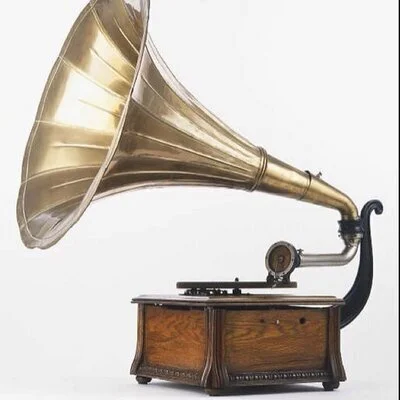Place Ted Hearne
TED HEARNE
PLACE
Pulitzer prize finalist, composer, singer and conductor Ted Hearne, who is “not afraid to bring politics and social justice issues into his music,” (WFMT) grapples with the generational conversation of gentrification in Place, an “explosive, restless, fragment-laden score,” (New York Times) written in collaboration with poet/activist Saul Williams. This expansive hybrid album produced by Nick Tipp features an all-star ensemble of musicians from the divergent worlds of hip-hop, R&B, experimental and noise music to contemporary chamber ensembles. Place is a multifarious meditation on white supremacy, fatherhood, displacement and loss, at once intimate and monumental.
"Gentrification is a generational conversation that has gone by many names. We should not discuss what brings you back to the city without acknowledging why you left.” - Saul Williams from Place
Place took shape as Hearne saw his own neighborhood of Fort Greene, Brooklyn, rapidly transforming during the last term of Mike Bloomberg’s mayorship of New York City, leading him to grapple with his own role in that progression.
“Rents rose every year as the neighborhood became a coveted destination for people with money. Long-standing local businesses closed and were replaced with pricier, more artisanal alternatives,” he explains. “Occasionally I saw children subjected to unconstitutional searches and arrest outside my front door since ‘stop-and- frisk’ was in full force. The year I moved, a movie star bought a brownstone on my block. It was the zip code with the greatest disparity of wealth in New York City.”
The music in Place serves as a map that cuts through many boundaries, with vocal parts written specifically for voices he knew from different stages of his life, including singers he grew up performing with in Chicago. The instrumentalists in Place represent wide-ranging backgrounds that include avant garde/experimental circles, to those who play regularly with the likes Erykah Badu and other hip-hop and R&B groups, as well as strings and reed players most often associated with contemporary chamber music groups.
“The album treats these as a kind of underpainting — a conscious layering that is a deliberate part of the texture,” as Hearne describes it, adding that Place is “meant to be heard as sort of a jarring, Sanford Biggers-esque quilt, where the edges make it clear the materials have their own infungible properties, not a neoliberal melting pot where all perspectives can combine to make a pleasant if bland smoothie.”
“His score is stylistically diverse, with a sophisticated weirdness to the color palette,” writes Corinna da Fonseca-Wollheim in a New York Times review of the Brooklyn Academy of Music performance, where the piece premiered. “It always felt as Mr. Hearne was questioning his own comfort and — in the final moment — his power.”
Hearne sought the perspective of acclaimed poet Saul Williams as a counterpoint to his own. Williams challenged the spiraling narcissism inherent in the oh-so-well-meaning white male protagonist exploring his own complicity, by kicking the subject outward to its historical and theoretical origins.
“I was raised to not think about my own whiteness, but that doesn't mean it hasn't developed to impact every aspect of my life,” Hearne says. “How could it not, having grown up in a culture built on systemic racism, in cities built on the legacies of redlining and a racist criminal justice system.”
“It is a great privilege to have created this project with Saul Williams, someone who has for decades been confronting issues of gentrification, corporatization and racism through his incredible work," explains Hearne, who describes Williams’ 1998 film Slam as a seminal work that spoke “to the horrors of the prison-industrial complex before mainstream culture had caught on.”
Hearne also describes Williams’ The Dead Emcee Scrolls as “a profound work” that—when adapted into an album with the Arditti Quartet with music by Swiss composer Thomas Kessler— “it was clear Saul's sonic sensibilities knew no bounds.”
Rather than simply an intellectual exercise in an all-too-familiar gentrification cycle that's only ramped up in the 21st Century, Hearne's own exploration took an inward turn.
"The process of considering my own role in gentrification, in displacement, became startlingly personal as I realized I couldn't speak to the invisible boundaries I felt navigating my neighborhood without confronting my own personal boundaries," he says. "This led to asking: If some people don't have the privilege of keeping their political identities out of their personal lives, what right do I have? And: how is whiteness a learned performance? Place became about weighing a personal sense of space and place in the most immediate family relationships against the inherited and generational."
—
ALBUM CREDITS
Music by Ted Hearne | Libretto by Saul Williams and Ted Hearne | Conceived by Ted Hearne, Saul Williams and Patricia McGregor for the Los Angeles Philharmonic, the Barbican Centre and Beth Morrison Projects | Produced by Nick Tipp with Ted Hearne
Vocalists: Steven Bradshaw, Sophia Byrd, Ted Hearne, Josephine Lee, Isaiah Robinson, Sol Ruiz, Ayanna Woods and Uniting Voices Chicago (Josephine Lee, artistic director)
Place Orchestra: Guitar: Taylor Levine | Bass Guitar: Braylon Lacy | Drums: Ron Wiltrout | Keyboard, Fender Rhodes, Hammond B3: RC Williams | Piano: Ted Hearne | Clarinet and Bass Clarinet: Eileen Mack | Bass Clarinet and Contrabass Clarinet: Christa Van Alstine | Trumpet: Jonah Levy | French Horn: Rachel Drehmann | Tenor Trombone: Matt Barbier | Bass Trombone: Weston Olencki | Viola: Diana Wade | Cello: Ashley Bathgate | Additional Cello: Eric Byers | Percussion: Clara Warnaar | Mixer Feedback: Philip White

























